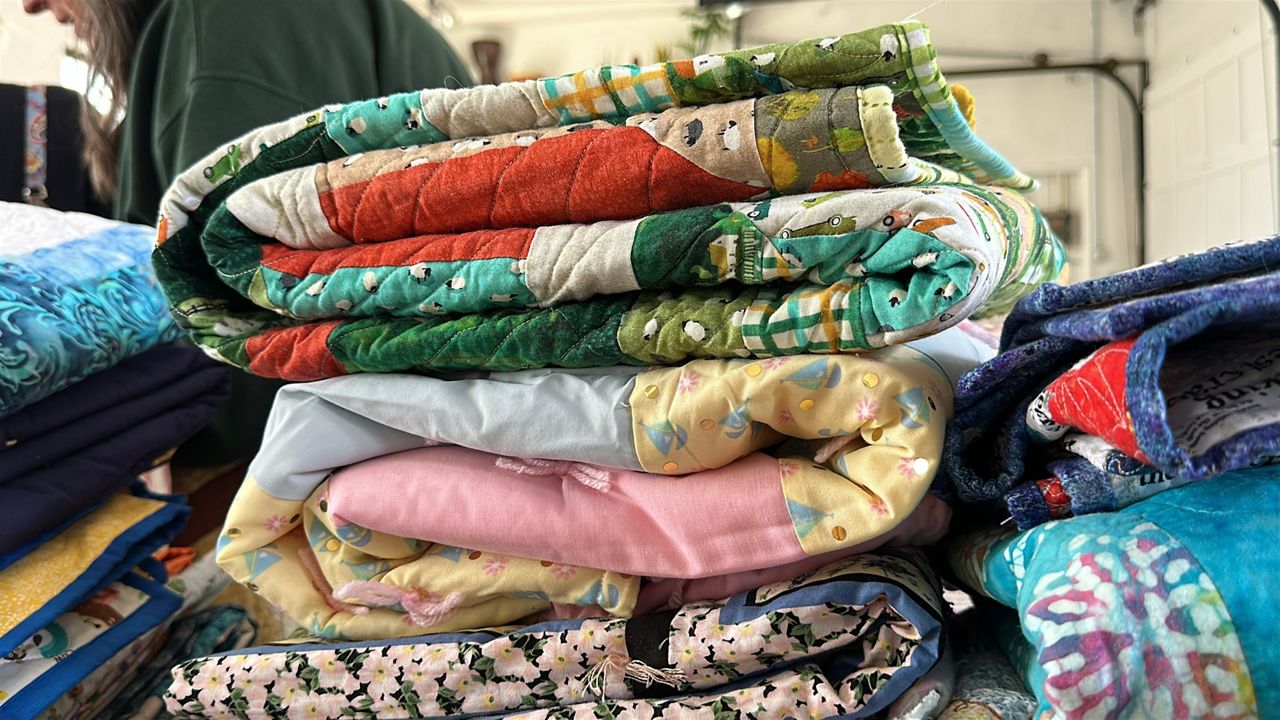LOS ANGELES — A letter sent from a concentration camp. A song composed inside Dachau. Photographs of a dance choreographed before the war.
These are some of the many items that can be found in the vast Herbert and Trudl Zipper Archive housed at the Colburn School.
“This mark right here, one of the Nazis read it,” archivist Brendon Morris said, pointing to a notation written in pencil at the top of a letter from Zipper to his mother. The letter from Nov. 6, 1938, had been pre-screened before it sent.
The Colburn School recently received a federal Save America’s Treasures grant of almost $375,000 to digitize the entire archive. At this point, not even Morris knows how many individual items that will entail.
“There are around 380 boxes, so there’s a lot within those boxes,” he explained of the collection which fills several bookcases in the school’s library. “I definitely have my work cut out for me.”
He only got the job at the Colburn School in January and his focus is to bring the archive, which spans from 1900 to 1997, into the 21st century. That will mean a lot of time spent waiting by a scanner while also finding creative and effective ways to digitize things like videotaped footage and physical objects. A medal Zipper received for contributions to the arts, for instance, will need to be photographed from every angle to accurately reflect its dimensions.
Even though he’s barely begun the process, Morris says it’s already been a moving experience, especially reading the correspondence from during Zipper’s time in Dachau and Buchenwald.
“Seeing the stakes for this family at this really historical moment,” he explained, “every time I read it, I do kind of get like history chills.”
Violinist Adam Millstein feels a certain connection to Zipper, who not only wrote music inside the camps but also got musicians to create instruments out of scrap materials and play in secret Sunday concerts.
“Zipper put himself even more at risk to create music and to save some sort of semblance of humanity… to always be reminded of himself as a human being,” Millstein explained. “As much as the Nazis tried to degrade who Zipper was, he utilized music as a form of legitimate resistance.”
Millstein is the program manager of the Colburn School’s Ziering-Conlon Initiative for Recovered Voices, which focuses on studying and performing the music of people whose lives and careers were cut short or altogether erased by the Nazi regime. He says the Zipper Archive ties into that mission in an important way.
“There's materials in here that are actually from pre-war as well. So 1920s, 1930s Vienna,” he said. “That's a really tremendous resource to understand how people were experimenting artistically before this oppressive, horrible regime came into power and resulted in the mass, Exodus and murder of millions as we know.”
“There are some studies that are saying, you know, younger people don't even know that the Holocaust even happened,” he explained. “We're so fortunate to have these things preserved, so that they can never be forgotten. That's why this archive is also just so exciting.”
And why it’s also a huge responsibility, Morris handles every item, not just with care, but with reverence.
“I always handle them with the utmost respect,” he said, looking down at Zipper’s release order from Buchenwald which sits on the table in front of him, “and really kind of think about the sense of place in each of the documents.”
The grant is expected to last three years and Morris thinks it will take that entire time to digitize the whole collection. But given the amount of global interest there is in the contents, he doesn’t plan on making scholars wait. Instead, he will publish as he goes.
“There's a lot of cool stuff in the collection and I want to show it off,” he admitted.
The Zippers’ lives are stories worth telling, and Morris is glad to have a hand in preserving their legacy, one pixel at a time.











